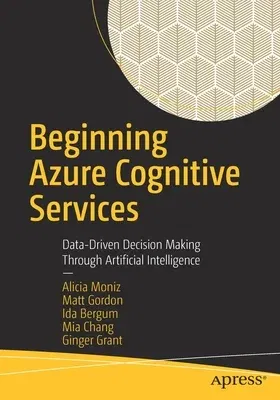Get started with Azure Cognitive Services and its APIs that expose
machine learning as a service. This book introduces the suite of Azure
Cognitive Services and helps you take advantage of the proven machine
learning algorithms that have been developed by experts and made
available through Cognitive Services, easily integrating those
algorithms into your own applications without having to develop the
algorithms from scratch. The book also shows you how to use the
algorithms provided by Cognitive Services to accelerate data analysis
and development within your organization.
The authors begin by introducing the tools and describing the steps
needed to invoke libraries to analyze structured and unstructured text,
speech, and pictures, and you will learn to create interactive chatbots
using the Cognitive Services libraries. Each chapter contains the
information you need to implement artificial intelligence (AI) via Azure
Cognitive Services in your personal and professional projects.
The book also covers ethical considerations that are becoming
increasingly of concern when using AI to drive decision making. You will
be introduced to tools such as FairLearn and InterpretML that can help
you detect bias and understand the results your models are generating.
What You Will Learn
-
Invoke the Cognitive Services APIs from a variety of languages and
apps
-
Understand common design architectures for AI solutions in Azure
-
Decrease discrimination and bias when creating an AI-driven solution
-
Execute the examples within the book and learn how to extend those
examples
-
Implement best practices for leveraging the Vision, Speech, and
Language parts of the suite
-
Test Cognitive Services APIs via the Azure portal and using the
Postman API tool
-
Execute AI from low-code and no-code platforms like Logic Apps and
Microsoft's Power Platform
Who This Book Is For
Technical professionals who are interested in implementing artificial
intelligence (AI) in pre-existing apps, expanding their value and skill
sets, or learning more about AI for personal projects; for programmers
working in languages such as C# and Python; and for those using low- and
no-code platforms such as Microsoft Power Platform


